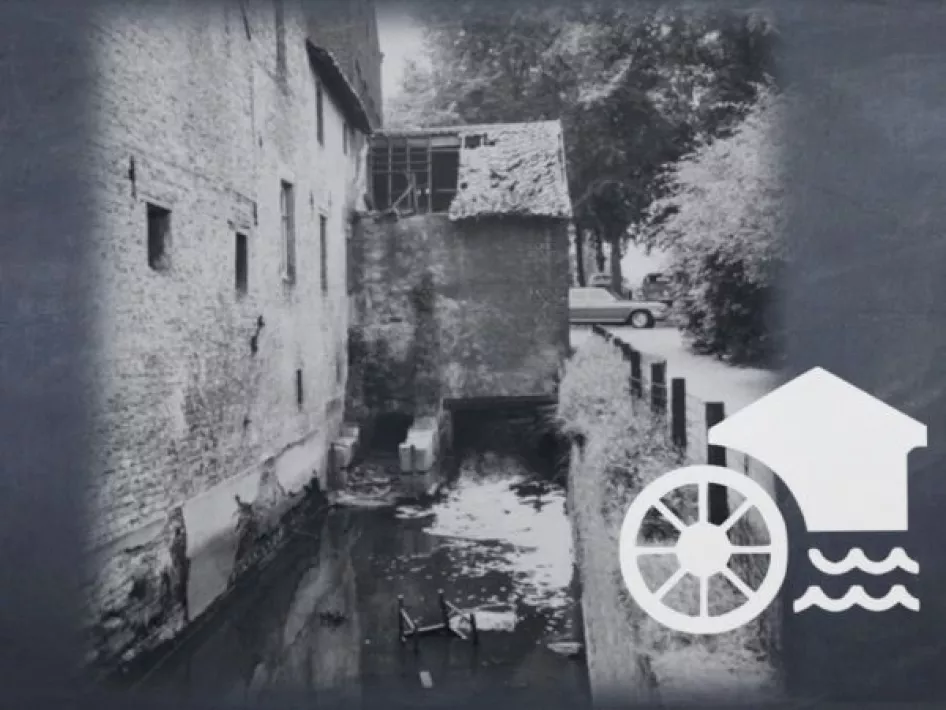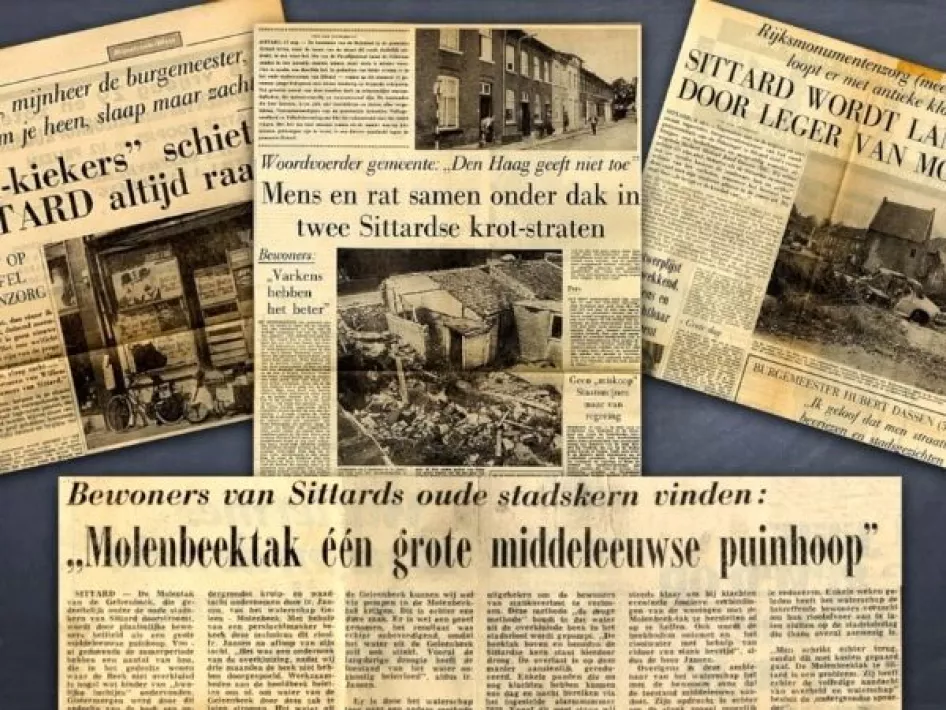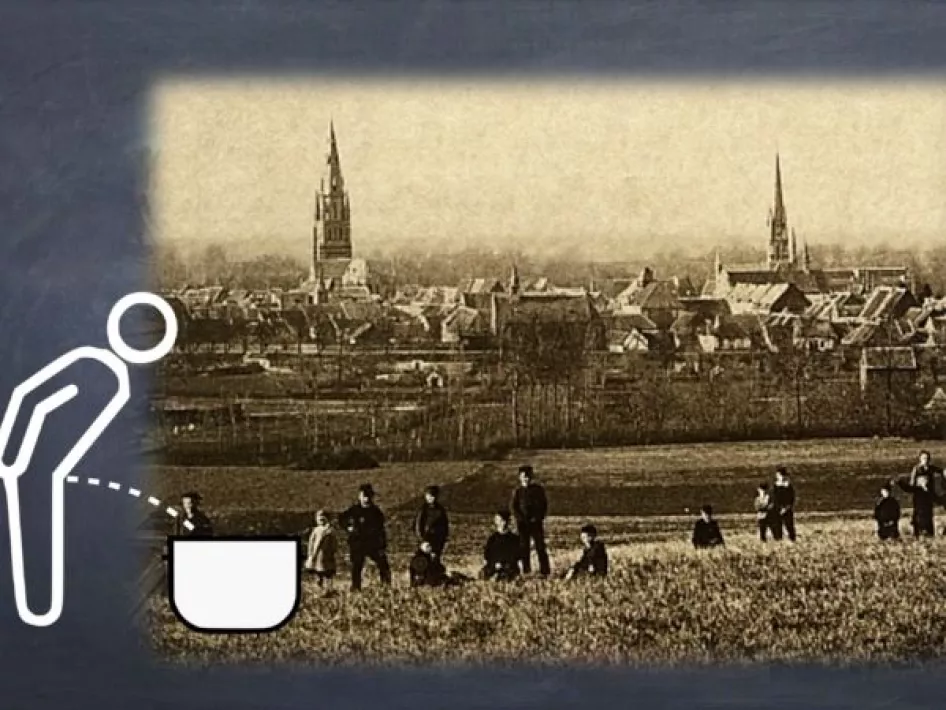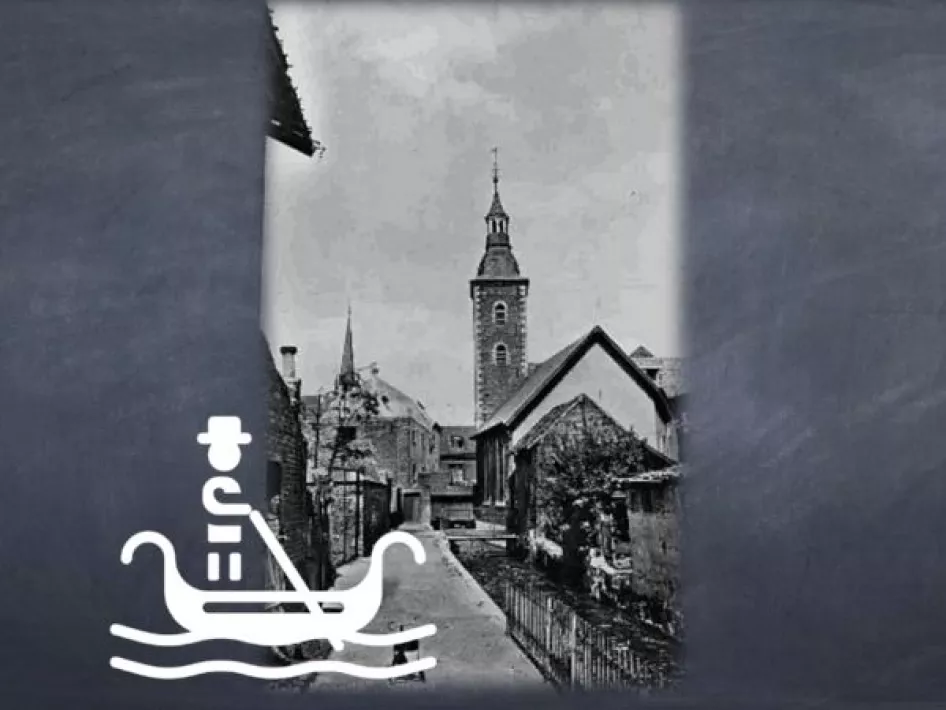The importance of water for the city
Somewhat south in the city park is the Stenen Sluis (the Stone Sluice). This is where the Molenbeek stream splits from the Geleenbeek stream. The Molenbeek was dug in the 12th century at the latest, but presumably earlier. Initially, they reused an old brook course and dug out adjacent sections. This would explain the tortuous course of the Molenbeek through the city. As its name suggests, there used to be multiple mills (molens) along the stream. In 1344, there's mention of a flour mill along the Molenbeekstraat. This mill belonged to the lord of the city. All of the inhabitants had to grind their grain here and that's why this type of mill is called a 'ban mill'. Over fifty years later, there's mention of a second mill that was located close to the rampart at the Steyne Muurke (Stone Wall). This textile mill was used for wool manufacturing. Around the same time, tanners used to live in the Tempel area.
The water flowed from the Molenbeek into the city at Steyne Muurke, which is now partly underneath Tempelplein. This water gate facilitated the distribution of water over the canals and the flow of water through the city. By opening the locks, entire sections of land outside the rampart could be flooded.
In 1676, the French troops under king Louis XIV, the Sun King, destroyed the fortifications of Sittard. The canals were filled with the debris and the city flooded. A year later, the troops returned to pillage the city and set fire to most of it. The Tempel area was damaged as well. A memorial stone in the Helstraat commemorates the destruction of the ducal ban mill in 1677.
The mills remained the most important economic activity in the Tempel area. The Damoiseaux mill was located on the edge of the inner city. This area was known as Klein Venetië (Little Venice). The Houben mill was on the other side and its entrance was at the Helstraat. The mill was rebuilt after a fire in 1925 and it was purchased by Houben in 1932. He was the last miller.
In the 1950s and 60s, people started moving away from the area because they preferred living outside the city. In the late 60s, the Tempel area at the south side of the city fell more and more into ruin while awaiting remediation. The Gruizenstraat was depopulated. The water mills lost their economic function and fell into disrepair. The Molenbeek had become heavily polluted. A little further along, people in the Helstraat were living under dreadful conditions. In a 1967 interview in the LD paper, a resident says: "Children become less dirty outdoors compared to when they stay indoors". There were rats everywhere.
In order to build a shopping area, several houses needed to be demolished, including some that were listed as monuments. Only one house remains and it's located a little further along in the Gruizenstraat. Other interesting sights are Den Tempel from 1652 with its typical Maasland curly facade and the little Hervormde (Reformed) church from 1680-81. When the shopping area was built, the Molenbeek disappeared into an underground sewer pipe. The question is if and when it will see the light of day once more.
Download the app
PLEASE NOTE: you can reach the Archeo site in different ways.
From the Tempelplein car park in Sittard you enter the narrow street of Gruizenstraat. Follow this until you reach the white building Den Tegel after about 50 meters. You are now behind the shopping street. Walk and look towards the main shopping street. The Archeo location / tile of Corten steel is located here.
TIP: Also visit these archaeological sites in the area
Geleenbeek Ligne
Sittard Fortress city and fort Sanderbout




Archaeological site Sittard - the Molenbeek
Experience the archaeological story from the Molenbeek. Download the app and get face-to-face on site with our archaeologist. He tells you the history and the importance of the Molenbeek through most modern virtual technology. This makes you feel as if you transform into the past.
When
Always open.
Contact and location
Archeologische vindplaats Sittard - De Molenbeek
Gruizenstraat 27
6131 EH
SITTARD
archeoroutelimburg